![]()
![]()
![]()
Use LEFT and RIGHT arrow keys to navigate between flashcards;
Use UP and DOWN arrow keys to flip the card;
H to show hint;
A reads text to speech;
15 Cards in this Set
- Front
- Back
- 3rd side (hint)
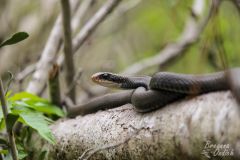
Photo credit: Breanna Ondich |
Black Racer (Coluber constrictor) |
Uniformly black and slender with large eyes,sometimes with white/gray patch under chin •Juveniles have brown or reddish blotches running down the back •Can grow to be 5ft in length •Habitat generalists but are most abundant around old fields, and forest and wetland edges •Diurnal •Prey on amphibians, lizards, snakes,small birds and rodents |
|

|
Yellow rat snake (Elaphe {Pantherophis} obsoleta) |
•Distinguished by four dark stripes that run the length of the body •Juveniles resemble gray rat snakes withgray blotches that run the length of the body •3-5ft in length •Habitat generalist •Adept climbers that prey on squirrels,birds, eggs, and small mammals |
|
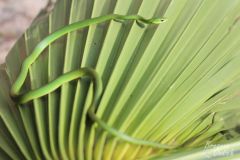
Photo credit: Breanna Ondich |
Rough Green (Opheodrys aestivus) |
•Name refers to solid green, keeled scales •Long and slender, growing to 32 in withlong tails •Arboreal, spending most of their time in trees and shrubs, especially along wetland edges looking for insects and spiders •May be found on the ground near refugia suchas logs and debris during cool weather •scales fade to blue or black after death and may be hard to distinguish from black racers |
|
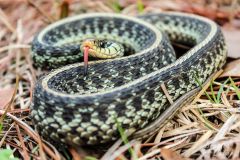
Photo credit: Breanna Ondich |
Eastern garter snake (Thamnophis sirtalis) |
•Characterized by three yellow stripes that run the length of their bodies as well as a checkered pattern along their sides •Distinguished from Ribbon snakes by the black stripes on their lip scales •Usually between 18-26 in long •Habitat generalists that can be found most often around ditches, streams, and ponds •Prey on worms, slugs, amphibians, fish |
|
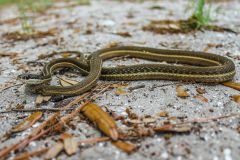
Photo credit: Breanna Ondich |
Ribbon snake (Thamnophis sauritus) |
Characterized by three yellow stripes that run the length of the body •Distinguished from garter snakes by the lack of striping on the lip scales •Usually between 16-28 in, very slender body shape •Semi-aquatic spending most of their time near shorelines of lakes, bogs, and marshes looking for fish and amphibians |
|
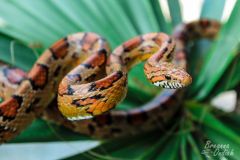
Photo credit: Breanna Ondich |
Corn snake (Elaphe {Pantherophis} guttata) |
•Easily identified by the checkerboard patternon their ventral scales and orange or reddish brown blotches on their dorsalscales •Grow to 3-4 ft inlength •Mistaken for venomous copperheads which have hour-glass shaped blotches •Excellent climbers that spend time searching for birds and lizards, although they tend to be fossorial during warm months |
|
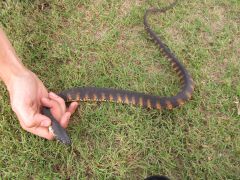
|
Banded Water snake (Nerodia fasciata) |
Stout, heavy-bodied snake usually measuring between 2-4 ft inlength •Coloration is variable from reddish brown to almost black with wide crossbands along the back •Semiaquatic- most often seen basking onsubmerged logs or overhanding branches or swimming on the surface of freshwater •Prey on amphibians and small fish |
|
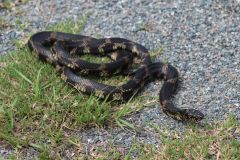
Photo credit: Breanna Ondich |
Eastern Kingsnake (Lampropeltis getula) |
Largesnakes measuring 3-4 ft in length •Usually black with white or yellow chainlink bands that cross the back and connect on the sides •Generally fossorial seeking refuge instumps, logs, or small mammal burrows often around stream banks or wetlands •Immune to pit-viper venom, specialize ineating venomous snakes, lizards, rodents, and eggs |
|
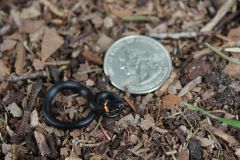
Photo credit: Rick Bauer |
Ringnecksnake (Diadophis punctatus) |
•Easily identified by the orange or yellowband around their necks •Generally brown to gray dorsal scales with yellow ventral scales •Measure between 10-15 in •Fossorial, spending most of their timeunder rocks, logs, and leaf litter in moist areas around wetland edges •Weak venom in their saliva is used to kill small arthropods, lizards, and amphibians |
|
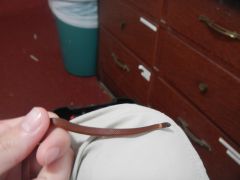
|
Red-bellied snake (Storeria occipitomaculata) |
•Easily identified and distinguished from othersmall fossorial snakes by their dark orange bellies •Small, only measuring 4-10 in in length •Usually hide in leaf piles and underrocks and rotting logs around wetland edges •Primarily feed on slugs |
|
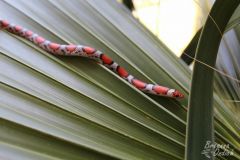
Photo credit: Breanna Ondich |
Scarlet snake (Cemophora coccinea) |
•Distinguished from the scarlet kingsnake bybands that do not encircle the body, but end on the sides •Total length up to 20 in •Fossorial snakes most often found underrotting logs, leaf litter, or other cover, but may be seen moving across roadsat night •Specialize in eating eggs using enlarged teeth to break eggs open |
|
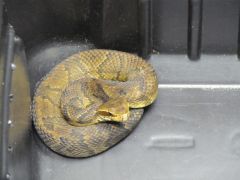
|
Cottonmouth (Agkistrodon piscivorous) |
•Large, semi-aquatic, venomous (24-48inches)•Distinguished from water snakes by darkline through eyes •May have distinct crossbands onbrown, yellow, or black background, although color darkens with age •Juveniles have yellow tail tip to attractprey •Often gapes when threatened and flasheswhite mouth |
|
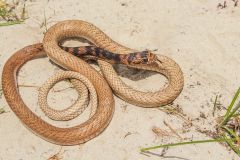
Photo credit: Breanna Ondich |
Coachwhip (Masticophis flagellum) |
•Long slender snakes reaching up to 8 feet inlength •Color fades from black on head to tan,but may be completely tan •Large eyes for finding lizards, snakes,insects and amphibians •Tolerate hot weather in open habitatswith sandy soils |
|
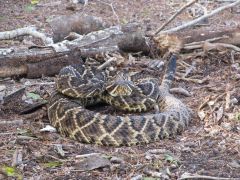
|
Eastern Diamondback Rattlesnake (Crotalus adamanteus) |
•Largest species of rattlesnake between33-72 inches•Identified by diamond shaped pattern onbrown or tan background •Usually found in dense palmetto thicketsor other dense vegetation where they can ambush prey •Venomous |
|
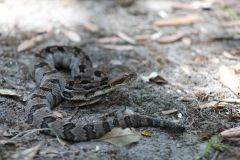
Photo credit: Breanna Ondich |
Timber/Canebrake Rattlesnake (Crotalus horridus) |
•Heavy bodied rattlesnakes between 30-60inches in length•Identified by black chevron stripes on agray or brown background with a brown stripe running down the center•Found in lowland cane thickets, aroundswamps and floodplains, and in hardwood or pine forests Venomous |

